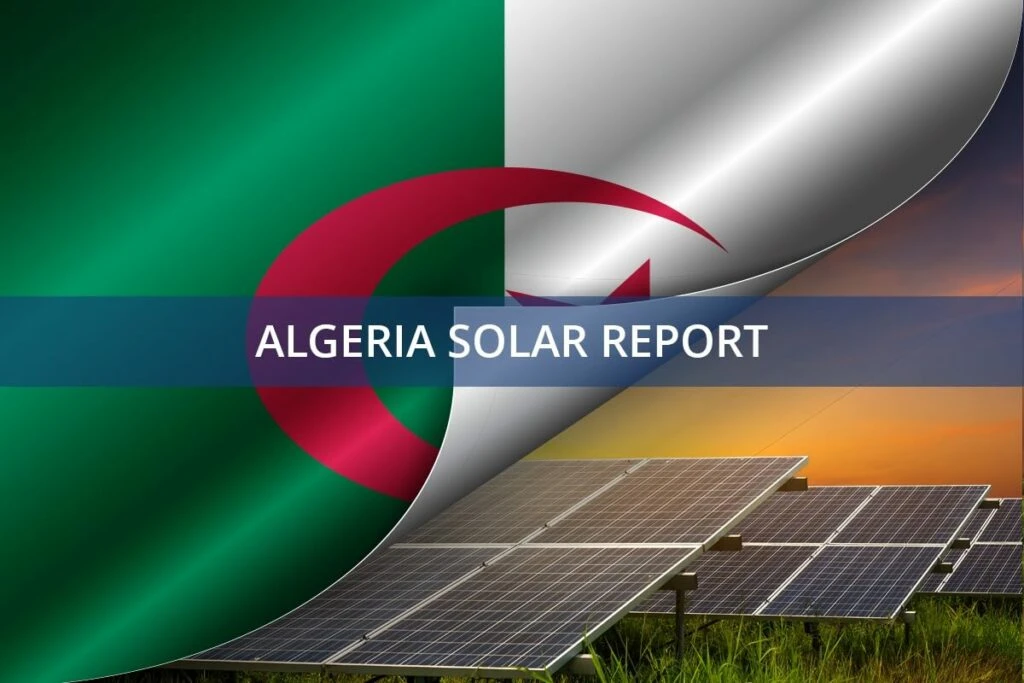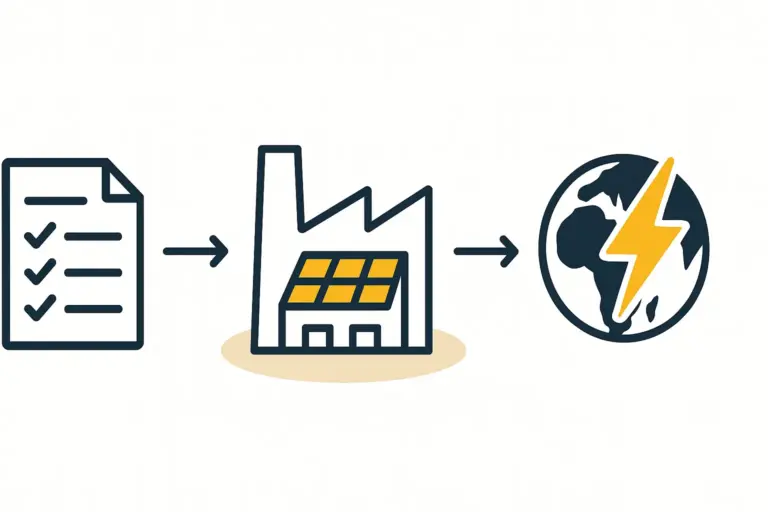Algeria is standing at a really exciting point in its energy story. With sunshine practically bursting from the seams and some pretty ambitious goals for renewable energy, there’s a genuine buzz around the potential for local solar module manufacturing. Just picture it: a venture like this could really kickstart economic growth, open up a whole host of new jobs, and help Algeria take bigger strides towards energy independence. But, if you’re an entrepreneur or investor with an eye on this, you’re probably asking: “How do I know if this kind of project will actually fly?” Well, the answer, as you might have guessed, lies in a really solid feasibility study.
In this article, we’re going to walk you through what a feasibility analysis for setting up a solar module production line right here in Algeria might look like, using a practical example. Drawing on our team’s many years of experience here at PVknowhow.com – guiding solar ventures all over the world – we want to offer a helpful framework for anyone looking seriously at this promising market. Now, while this example will give you some valuable food for thought, it’s important to remember that a truly bankable feasibility study for your specific project will need a much deeper, tailor-made dive into the details. And honestly, that’s exactly the kind of nitty-gritty work we love to do.
Table of Contents
Understanding the Algerian Solar Landscape – Market Potential
So, what’s the scene like in Algeria for solar? Well, the country is actively working to broaden its energy horizons, and solar power is a massive part of that vision. The government has laid out some impressive targets, like the “Solar 1,000 MW” program, which, as the name suggests, is aiming to get 1 GW of solar capacity installed. This, quite naturally, is fueling a strong homegrown demand for solar modules. As it stands, a good chunk of this demand is met by bringing modules in from overseas, which, if you ask us, clearly spells opportunity for local manufacturers.
Current thinking puts local manufacturing capacity at around 500 MW per year, and there’s a good bit of optimism that this could climb to 600-700 MW by the close of 2025 (according to what we’ve seen in PV Magazine). But even with that growth, demand is expected to keep on rising, so there’s definitely still room at the table for new players. Government incentives, which can be a bit of a moving target, have historically tried to nurture local production, so getting a firm grip on these is absolutely vital. And while there are a few established competitors out there, the market is by no means sewn up, especially if you’re looking at high-quality, technologically advanced modules.
A PVKnowhow Perspective: You know, when we get our teeth into a market analysis – and that’s a real cornerstone of any solid feasibility study – we don’t just skim the surface. We go deep. We look at what’s really driving demand (is it big utility-scale projects, commercial setups, or folks wanting panels on their homes?), we carefully size up the competition, we scrutinize import/export patterns, and we really try to pinpoint those sweet spots in the market where a new venture can truly shine.
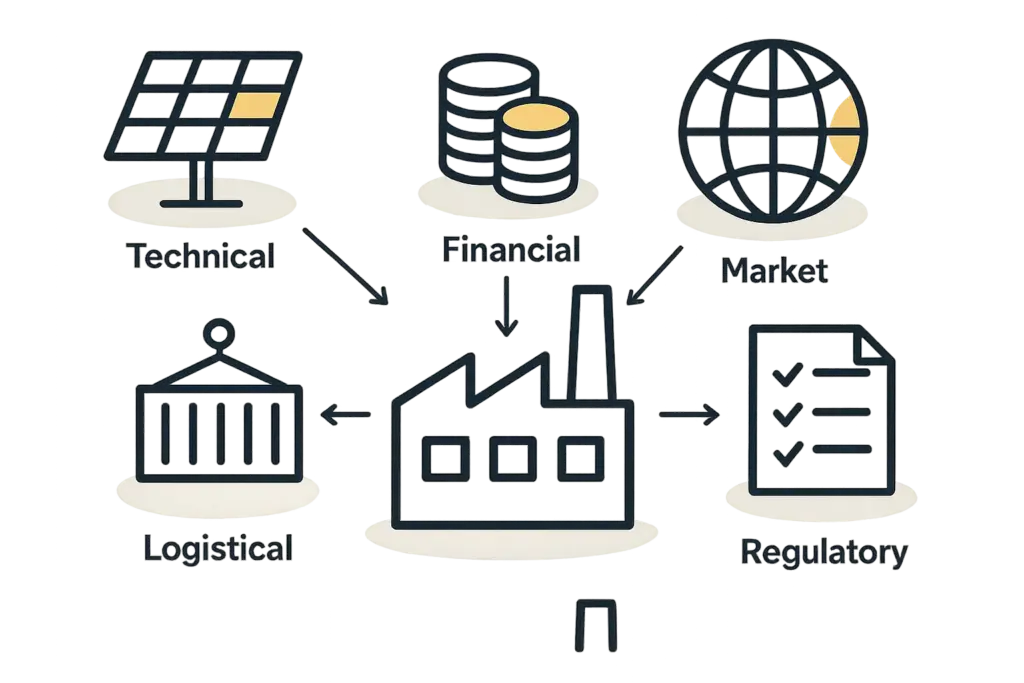
Example Project Scope: A 100 MW Solar Module Plant in Algeria
To help us get our heads around this, let’s imagine we’re planning a hypothetical solar module manufacturing plant. Let’s say it has an annual production capacity of 100 MW. This kind of scale often hits a sweet spot – it’s significant enough to make an impact but still manageable as a starting point for many entrepreneurs and investors.
- Proposed Capacity: 100 MW per year. That’s our target output.
- Technology Focus: We’d probably be looking at Monocrystalline PERC (Passivated Emitter and Rear Cell) modules. It’s a widely adopted technology and known for its efficiency. We might also think about building in bifacial capabilities – that’s where panels can grab sunlight from both sides – for an extra little boost in energy yield.
- Target Market: Primarily, we’d be aiming for domestic utility-scale projects that come through government tenders. Then there are commercial and industrial (C&I) rooftop installations, and potentially even the residential sector, perhaps working through distributors.
This scope allows us to envision a modern, efficient production line, churning out modules that people really want. It’s big enough to start seeing some benefits from economies of scale when buying materials and in production, but not so huge that it would instantly flood a local market that’s still growing.
Technical Feasibility – What’s Needed on the Ground?
Alright, so you’ve got the idea. Now, what does it actually take to set up a solar module plant? It means some really careful planning of all the physical bits and pieces, and the technical know-how.
Location and Infrastructure
Picking the right spot? Absolutely critical. Here’s what you’d be thinking about:
- You’ll need easy access to transport links – think ports and highways – for getting raw materials in and shipping your finished modules out.
- A reliable supply of utilities like electricity and water is a must-have.
- You’ll need a decent plot of land. For a 100 MW plant, you’re probably looking at something in the neighborhood of 4,000-5,000 m², and that includes space for warehousing and offices.
- And, of course, access to a pool of skilled and semi-skilled workers.
Often, you’ll find that industrial zones can offer some pretty good conditions and might already have some of this essential infrastructure ready to go.
Production Line & Equipment
A typical 100 MW module production line has several key stages, like an assembly line for solar panels:
- Cell Tabbing and Stringing: This is where individual solar cells are connected together to form strings.
- Layup/Bussing: These cell strings are then carefully arranged and interconnected.
- Lamination: This is a crucial step. The cells are encapsulated between layers of glass, EVA (Ethylene Vinyl Acetate – a type of adhesive film), and a backsheet, all sealed together using heat and vacuum.
- Framing: Next, the aluminum frames are attached, giving the module its strength.
- Junction Box Installation: The junction box, which allows for electrical connections, is fitted.
- Testing & Quality Control: This is super important. It includes IV testing (or flash testing) to measure electrical performance, electroluminescence (EL) testing to spot any tiny microcracks in the cells, and thorough visual checks.
The main bits of machinery you’d need include automatic cell stringers, layup stations, laminators, framing machines, IV testers, and EL testers. You can choose how much automation you want; more automation can mean lower labor costs and more consistent quality, but it also means a bigger upfront investment. Equipment can usually be sourced from well-known European or Asian suppliers. At PVKnowhow, for instance, we often find ourselves helping clients set up turnkey production lines, connecting them with reputable machinery providers.
Here is your entire content converted into clean, plain text without HTML tags, keeping the original wording exactly the same:
Raw Materials & Supply Chain
So, what actually goes into making a solar module? The main Bill of Materials (BOM) includes:
- Solar cells (these are usually the most significant cost and are typically imported, often from China, which is a major global producer)
- Tempered solar glass
- EVA encapsulant films
- Backsheets (materials like TPT or KPK)
- Aluminum frames
- Junction boxes, diodes, and cables
- Ribbon and busbars (for electrical connections)
- Sealants and adhesives
Having a robust supply chain strategy isn’t just important; it’s non-negotiable. While you might be able to find some materials locally (like frames or packaging, perhaps), key components like solar cells are very frequently imported.
Labor & Expertise
A 100 MW plant could directly employ somewhere in the region of 70-90 people. This would include:
- Skilled technicians to operate and look after the machinery.
- Engineers to oversee process control and ensure top-notch quality.
- Production line workers.
- Staff for logistics, sales, and all the admin work.
- And, of course, a dedicated management team to steer the ship.
Good training programs will be absolutely essential to make sure you’re producing high-quality modules and keeping operations running smoothly and efficiently.
A PVKnowhow Perspective: When we dive into technical feasibility, we really get into the nitty-gritty. We’re talking about optimizing the plant layout, helping you pick the right machinery that fits your project goals and budget (whether that’s semi-automated or fully automated lines), making sure materials flow efficiently through the plant, and even planning for workforce training. We also tap into our extensive network to help with things like supplier qualification – making sure you’re getting good quality materials from reliable sources.
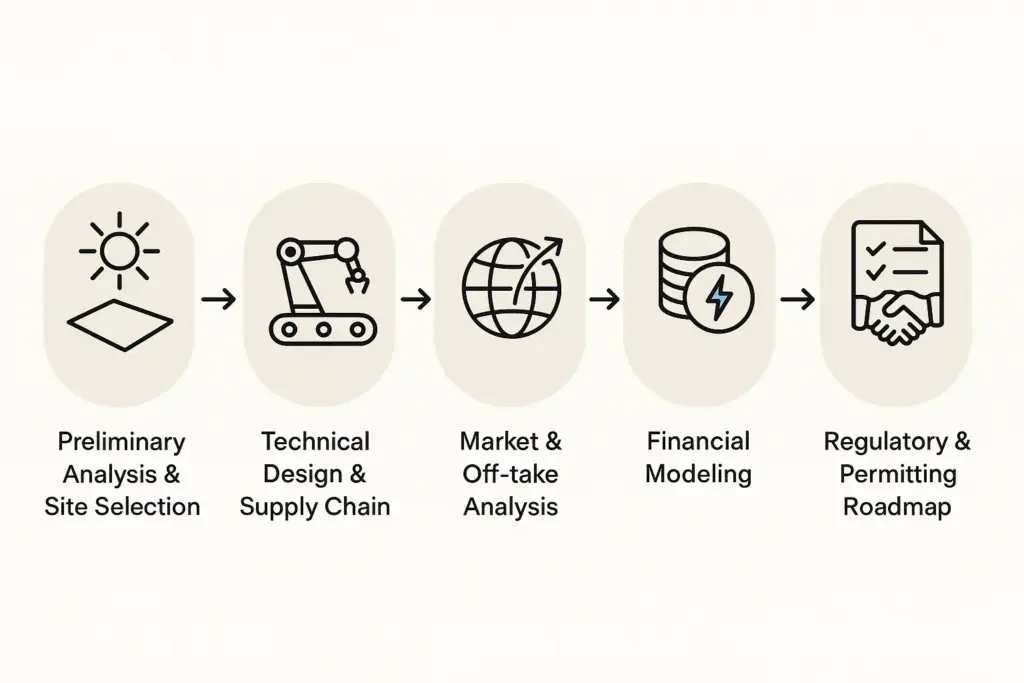
Financial Viability – The Numbers Game
Now for the part everyone wants to know about: the financials. A detailed financial model is, without a doubt, the beating heart of any feasibility study worth its salt. Let’s look at some sample figures for a 100 MW plant in Algeria. These are conceptually scaled from projects like the Zergoun Green Energy 180 MW plant (which reportedly involved an investment of around $11.6 – $12 million). Keep in mind these are ballpark figures to give you an idea.
Estimated Capital Investment (CAPEX)
For a 100 MW annual capacity plant, the total upfront investment might land somewhere in the $5.5 – $7 million range. This would typically break down into:
- Land & Building: (This can vary quite a bit, depending on whether you decide to lease or buy) Let’s say, for example, $1 – $1.5 million.
- Machinery & Equipment: (This is usually the biggest ticket item) Perhaps $3.5 – $4.5 million.
- Installation & Commissioning: Getting everything set up and running, say $0.3 – $0.5 million.
- Licenses & Permits: Around $0.05 – $0.1 million.
- Initial Working Capital: (You’ll need this for buying your first batch of raw materials and to cover initial operating costs before revenue starts flowing) Maybe $0.5 – $1 million.
If you break that down, it works out to an investment cost per Watt of installed annual capacity of roughly $0.055 – $0.07/W.
Projected Operating Costs (OPEX – Annual)
Your annual operating costs – what it takes to keep the lights on and the machines running – are heavily influenced by the price of raw materials and how much you actually produce.
- Raw Materials: This is the big one, potentially making up 70-80% of your module production cost. For a 100 MW output, this could be in the ballpark of $30 – $40 million annually, though this really depends on cell prices and other material costs at the time.
- Labor: (For those 70-90 employees) Let’s estimate $0.5 – $0.8 million.
- Utilities (Energy, Water): Maybe $0.2 – $0.4 million.
- Maintenance & Spares: Keeping things in good working order, say $0.1 – $0.2 million.
- Logistics & Shipping: (For getting materials in and finished modules out) Around $0.3 – $0.5 million.
- Sales & Marketing, Administrative Overheads: Things like office costs, marketing efforts, etc., perhaps $0.2 – $0.4 million.
- Depreciation: This is an accounting figure, based on the expected lifespan of your assets.
Revenue Projections
Okay, so what about the money coming in?
- Estimated Production Output: If your 100 MW plant is running at, say, 85% utilization (which is a reasonable target), it’ll produce about 85 MW of modules. If the average module power is around 340Wp, that’s roughly 250,000 modules a year.
- Average Selling Price (ASP): Looking at the Algerian market, we’ve seen module prices reported around €0.625/W (which is about $0.67/W) for specific projects, according to PV Magazine. However, for planning purposes, it’s always smart to be a bit conservative. Let’s assume an ex-factory price (the price as it leaves your factory doors) in the $0.35 – $0.45/W range. This will depend on the technology you’re using and what the market conditions are like when you sell.
- Annual Revenue Forecast: So, if you’re selling at an ASP of $0.40/W and you’re selling 85 MW worth of modules, your annual revenue would be around $34 million.
Profitability Analysis (Example)
Let’s touch on how you figure out if it’s profitable:
- Gross Profit Margin: This is your (Revenue minus Cost of Goods Sold) divided by Revenue. Your Cost of Goods Sold (COGS) is mostly your raw materials. So, if raw materials cost you, say, $0.30/W, and you sell for $0.40/W, your material gross margin is $0.10/W, or 25%.
- EBITDA (Earnings Before Interest, Taxes, Depreciation, and Amortization): This is a really key number that tells you how profitable your core operations are, before factoring in things like financing costs and taxes.
- Net Profit Margin: In solar module manufacturing, this typically hovers in the 5-15% range, but it’s incredibly sensitive to how efficiently you run things, your scale of operation, and, of course, market prices.
Return on Investment (ROI) & Payback Period (Example)
The big questions: when do you get your money back, and what’s the overall return?
- Simple Payback Period: This is your (Total Investment divided by Annual Net Profit). With good conditions and efficient operation, payback periods of 3-5 years can definitely be on the cards. Some reports we’ve seen even suggest that Algerian plants might achieve this in a faster 2-4 years.
- A full-blown feasibility study would also include detailed Net Present Value (NPV) and Internal Rate of Return (IRR) calculations. These are absolutely crucial for making your case to investors and getting financing.
A PVKnowhow Perspective: Building comprehensive, bankable financial models is something we really get a kick out of. Our premium business plan e-course, which actually comes with personal mentoring, is designed to walk people just like you through creating these models, step by step. We help you factor in all the local nuances, think about different financing structures, and run sensitivity analyses to make sure your financial projections are as robust and realistic as they can possibly be.
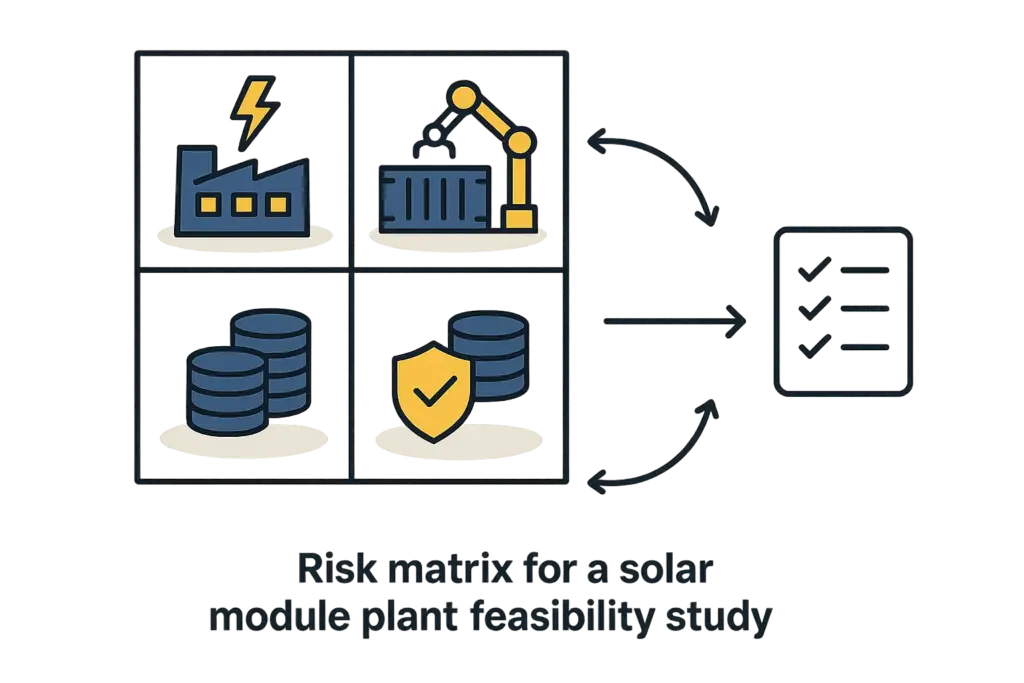
Regulatory Path and Environmental Considerations
Successfully finding your way through Algeria’s regulatory landscape is a super important step on your journey. Here are some key things you’ll need to have on your radar:
- Business Registration and Licensing: First things first, you’ll need to get all the necessary permits to operate a manufacturing facility. No surprises there!
- Investment Codes and Incentives: It’s really important to understand Algeria’s investment laws. Are there any specific incentives for renewable energy manufacturing, or for projects located in those designated industrial zones we mentioned?
- Environmental Regulations: You absolutely must comply with national standards for emissions, how you dispose of waste, and how you handle any chemicals. An Environmental Impact Assessment (EIA) is often part of this, to identify and figure out how to lessen any potential environmental effects.
- Labor Laws and Standards: Sticking to local employment regulations is, of course, a must.
- Customs and Import/Export Regulations: These will definitely affect how you source your raw materials and, potentially, if you plan to export finished modules.
Let’s be honest, manufacturing solar panels does involve chemicals and creates some waste products (like broken cells, trimmings from the EVA material, and byproducts from the lamination process). A responsible manufacturer – and that’s the only kind you want to be – will put programs in place to minimize waste and recycle wherever possible. For instance, teaming up with specialized waste management services to handle those manufacturing byproducts is essential. Proactively addressing any concerns people might have about solar panel manufacturing pollution helps build trust and credibility right from the get-go.
A PVKnowhow Perspective: Our consulting services often involve helping clients navigate the sometimes pretty complex regulatory maze in various countries. We draw on our global experience to help clients anticipate what’s required and to try and streamline the approval process, making it as smooth and painless as possible.
Risk Assessment – What Could Go Wrong?
Every business venture, no matter how exciting, comes with its share of risks. A good feasibility study doesn’t just point these out; it also suggests smart ways to manage or lessen them:
Market Risks:
- Prices for modules can go up and down (often influenced by what’s happening with global supply and demand).
- You might face competition from low-cost imports.
- Government policy or those helpful incentive programs could change.
- How to Mitigate: Think about locking in long-term supply agreements, really focus on delivering top quality and excellent local service, and try to spread your risk by diversifying your customer base.
Operational Risks:
- Your supply chain could hit a bump (maybe raw materials become hard to get, or prices suddenly shoot up).
- Equipment could break down, or you might run into technical snags.
- Finding enough skilled labor could be a challenge.
- How to Mitigate: It’s wise to source from multiple suppliers if you can, stick to robust maintenance schedules for your machinery, and implement really good training programs for your team.
Financial Risks:
- Costs could run higher than expected during construction or once you’re up and running.
- You might find it difficult to secure financing, or the loan terms might not be great.
- Currency exchange rates can be volatile and impact your numbers.
- How to Mitigate: Implement detailed budgeting and keep a close eye on costs, have strong financial planning in place from day one, and perhaps consider financial hedging strategies for currency risks.
Regulatory & Political Risks:
- Laws could change, or the approval processes might drag on.
- Political instability could affect the investment climate (this is a factor in many emerging markets).
- How to Mitigate: Conduct really thorough due diligence, think about partnering with local experts or businesses, and always, always stay informed about any policy changes on the horizon.
Why This Feasibility Study Matters for Algerian Solar Growth
When you get down to it, establishing local solar module manufacturing, guided by a really solid feasibility study, offers so many wins for Algeria:
- Job Creation: We’re talking direct jobs in the factory (remember, a 100 MW plant could mean 70-90 jobs, and something larger like the 200MW Zergoun Green Energy plant, potentially 150 jobs) and also indirect jobs in industries that support manufacturing.
- Economic Diversification: This is a big one. It helps Algeria reduce its reliance on hydrocarbon exports and builds up a whole new industrial sector.
- Reduced Import Dependency: It makes the country’s energy supply more secure and keeps more economic value right there within Algeria.
- Technology Transfer and Skill Development: It helps build up local know-how in advanced manufacturing – skills that are valuable well beyond just solar.
- Supporting Renewable Energy Goals: And, of course, it ensures a stable, local supply of modules to help Algeria hit those ambitious solar deployment targets we talked about.
Your Next Step: Partnering with PVknowhow for a Bankable Feasibility Study
Hopefully, this overview has given you a good taste of the complexities involved in planning a solar module manufacturing plant. While it offers a foundational understanding, let’s be frank: deciding to invest millions of dollars requires a much deeper, more specific, and truly bankable feasibility study.
Here at PVknowhow.com, this is precisely our bread and butter, drawing on over two decades of hands-on, in-the-trenches experience from our J.v.G. Technology GmbH founders, Johann von Gott Thoma and Patrick Thoma. We offer:
- Turnkey Solar Production Lines: From helping you choose the right machinery to getting the process engineering spot on and facilitating technology transfer, we can guide you every step of the way.
- Premium Business Plan E-Course: We’ll take you by the hand, with personal mentoring, to create those robust financial models and strategic plans that investors want to see.
- One-on-One Consulting: We’re here, ready to roll up our sleeves and help you tackle your specific technical, operational, and financial challenges.
A professional feasibility study from our team at PVKnowhow provides the clarity you absolutely need for informed decision-making. It significantly de-risks your investment (which is always a good thing!) and, more often than not, it’s a prerequisite for securing financing. Ultimately, it’s what transforms an ambitious idea into an actionable, fundable project.
Ready to turn your Algerian solar vision into a bankable project? Contact PVknowhow today for a confidential, no-obligation consultation. Let our experts guide your solar module manufacturing venture in Algeria to success.
Conclusion
The opportunity for solar module manufacturing in Algeria is undeniably real, and it’s being propelled forward by strong government backing for renewables and a growing hunger for energy. However, success in this arena truly hinges on meticulous planning and a deep, practical understanding of the local market, all the technical ins and outs, the financial realities, and, of course, the regulatory environment. An initial feasibility study, like the kind of example we’ve walked through here, is an excellent first step to take. For entrepreneurs and investors who are serious about capitalizing on Algeria’s solar boom, the critical next move is to partner with experienced advisors – like our team here at PVknowhow.com – to develop that comprehensive, bankable feasibility study. That’s what paves the way for building a successful and truly impactful local solar manufacturing enterprise.
Want to learn more or need expert help? Visit our free e-course or explore our services. Or, if you’re ready to dive deeper, our Premium Business Plan E-Course offers personalized guidance to get your venture off the ground. Let’s make your solar journey smooth and successful.

